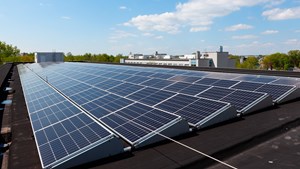District heating in Oulu is competitive
The development of energy, such as district heating, prices has been a subject of discussion over the last two years. However, those living in district heating properties in Oulu have been able to rely on the moderate long-term price development of district heating.
District heating has proven to be affordable and the price very foreseeable. Over the past year, demand for district heating has grown in almost all of Finland (article in Finnish only). This has been because of, among other things, the sharp price increase due to the energy crisis in fossil fuels, especially natural gas and oil, and electricity.
Tommi Kantola, business director at Oulun Energia, is confident that the price development of district heating will remain foreseeable in the future.
The electricity market has been turbulent due to the Russian war of aggression and the increase in the prices of raw materials, among other things, but during the past winter, Oulun Energia’s price of district heat has increased more moderately than that of electricity. This is because of how versatile and local the heat sources are.
“Oulun Energia’s district heating is not dependent on one raw material. This protects against price increases,” says Kantola.
In Oulu, the price of district heating is also more affordable than in other large cities. According to Kantola, this is due not only to the versatile energy sources, but also to the fact that in Oulu, the district heating system has been made more flexible and energy- and cost-efficient.
Oulun Energia produces heat for its district heating network from various wood fractions, non-recyclable waste, industrial by-products such as sawdust, and from peat until 2024. In addition, it utilises waste heat that is generated in industry, in-house power plant processes, and in the cooling of properties.
The latest example of this is the construction of the Nokia energy centre, which will be completed in 2025.
The energy centre being built by Oulun Energia will produce the cooling Nokia’s operations need. As for the waste heat produced from the operation of Nokia’s energy centre, it is used to responsibly produce approximately 70,000 megawatt hours of carbon-neutral district heat per year. The district heat produced corresponds to approximately 4% of Oulun Energia’s annual district heat demand.
Tommi Kantola believes that district heating will continue to be competitively priced and that price increases will remain moderate.

“Heat production is constantly being developed into being more competitive and more sustainable."
Long-term benefits are weighed when choosing a form of heating
Choosing a form of heating for a new detached house is a decision that will stay with you for a long time. Switching between forms of heating is expensive. When making the choice, the customer forms their opinion on the form of heating and considers what solution is cost-effective in the future.
“District heating is an environmentally friendly and responsible choice. The responsible choices are the ones most likely to be competitive in the long term.”
Of new properties, those where the district heating network extends to or is being built to can become district heating customers. An old property, one that is heated electrically, for example, can be connected to district heating if the district heating network is nearby. In addition, the property requires wet heating.
Kantola says that he himself decided on district heating.
“The beauty of district heating technology is that Oulun Energia is constantly developing the system and the technology is always up to date. The customers benefit from this constant development.”



